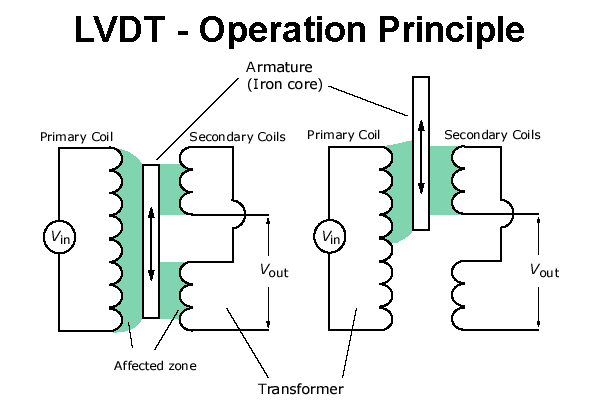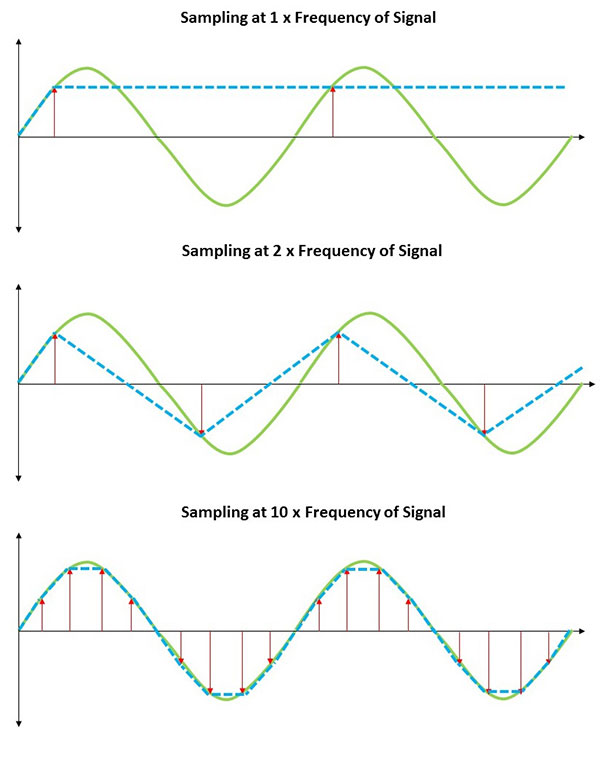Structural Monitoring with VW Crack Meters
In a recent project, a monitoring system was designed and installed onto a bridge. The purpose of the monitoring system was to measure the movement of several joints. It was perceived by engineers that excessive movement of the joints due to traffic or thermal expansion would see a catastrophic event occur. It was also part of a large repair and maintenance project being carried out at the same time, which included the installation of a Cathodic Protection system.
Designing the system involved considerable discussion to form a scope by which the system could be designed. Important information collected included:
- Type of gauge and the range of movement expected
- Sampling frequency required
- Relative gauge placement
- Gauge durability
- Datalogging requirements
- Data treatment
All of these aspects were important considerations and had their own layers of complexity, meaning that they were not mutually exclusive of each other. This article will look in general terms at the process that was undertaken.
Types of Gauges and Range
 Deflection gauges come in many shapes and sizes. To measure motion at a joint, they usually need to be quite large in order to span the joint and also allow for the large range of motion that might be observed. Standard resistive strain gauges which measure small deflections would not have the range of motion even if long enough to span the joint. In this case the "gap" over which the gauge must straddle was over 100mm and the range of motion required was up to 100mm so the required gauges were quite large.
Deflection gauges come in many shapes and sizes. To measure motion at a joint, they usually need to be quite large in order to span the joint and also allow for the large range of motion that might be observed. Standard resistive strain gauges which measure small deflections would not have the range of motion even if long enough to span the joint. In this case the "gap" over which the gauge must straddle was over 100mm and the range of motion required was up to 100mm so the required gauges were quite large.
The two main options in terms of sensor technology for large deflections are Linear Variable Differential Transformer (LVDTs) or Vibrating Wire Crack Meters (VWCM). LVDTs operate by measuring alternating current voltage difference as the relative arrangement of 3 coils is changed due to extension or contraction of the gauge.
VWCMs operate by measuring the frequency of a taut wire held between to anchored ends. The frequency varies with the tension and hence the extension or contraction on the gauge.

The main advantage of the VWCM is that its position readings are very stable over long installation periods and there are few length or EM radiation restrictions on the cable between gauge and data logger. LVDTs have the restriction that the cable length will affect the voltage signal collected from the gauge. The maximum sampling frequency for VWCMs is also considerably slower than an LVDT.
Sampling Frequency
 The movement of a truck over a bridge can be considered to be a dynamic scenario, that is forces on the bridge change quickly and are effected by both the speed and the weight of the truck. At the measurement point it would see relatively quick changes in deflection. The data required on this occasion was the maximum opening of the joint.
The movement of a truck over a bridge can be considered to be a dynamic scenario, that is forces on the bridge change quickly and are effected by both the speed and the weight of the truck. At the measurement point it would see relatively quick changes in deflection. The data required on this occasion was the maximum opening of the joint.
In digital sampling theory, the Nyquist frequency is the minimum data collection rate at which an event needs to be sampled. It is generally twice the frequency of the event. Imagine a sine wave with a period (T) of 1s, the frequency of that would be 1Hz (ie 1/T). The Nyquist frequency would be 2Hz or a sample every 0.5s. The Nyquist frequency is the minimum rate at which it could be sampled and would generally pick up 1 positive and 1 negative measurement from that sine wave.
However, the accuracy of the measured amplitude would be very poor over one event. It would improve over multiple similar events. In order to gain more accuracy, the event must be sampled at a much higher rate. Mathematically it can be determined that an accuracy of 5% could be achieved with the same Sine wave if it were sampled at 10Hz.
So essentially the sampling rate must be considered in every scenario, and in the case of the gauge selection the LVDT has a huge advantage in maximum sample rate over the VWCM. The VWCM's traditional maximum sample rate is 0.5Hz. It was determined by the structural engineers that a sampling rate of 0.5Hz was sufficient to gather the information required about the joints on the bridge.
Gauge placement
The bridge structural length was over 350m and it was hoped that 5 points on the structure would be monitored. The monitoring point were evenly spaced over the span, meaning there would be on average 70m between each gauge linearly along the bridge.
LVDTs cannot be installed with long cables and so should they be used there would need to be multiple dataloggers on the structure installed along the bridge. Each data logger requires power and so either 5 sets of batteries would need to be monitored or power would need to be delivered onto the structure from an external source. If the data was required to be time synced this would be close to impossible without wireless connectivity and even then it is unreliable.
This made VWCMs the leading candidate as the cable lengths were not an issue and everything could be wired to one central datalogger close to the Transformer Rectifier for the CP system.
Gauge Durability
The general form of either LVDTs or VWCM is fairly similar. You need two anchor points on either side of the joint and the main gauge body. The gauge body allowed for the extension and contraction of one "arm" of the gauge. The "arm" needs to stay quite clean as it moves in and out of the gauge. Another consideration would be possible mechanical damage due to impacts or local fauna in the form of Seagulls.
A protective casing over the gauge was designed that allowed the case to be fixed to both sides of the joint and still offer splash resistance. Additionally, being in a marine environment it was required at both the gauge and its anchors were made from stainless steel. This is possible with both types of gauges.
The cables to the gauge were also considered at this point. One concern is the UV stability of the cable sheath. Any installation intended to last more than a couple of months either needs to have UV stabilised cable sheath or a conduit. A conduit was used because it also provided mechanical protection and additional shielding from any high voltage cables on the structure for the CP.
Gauge selection
Overall the VWCM was selected due to its flexibility in regards to cable lengths and the advantages that gave the client in terms of being able to use one centrally mounted datalogger. The choice though did mean a limitation in terms of sampling frequency and some added complexity in the data loggers' design.
The Datalogger
Once the preferred gauge was determined the data logger could be considered. A VW gauge requires a VW interface inside the data logger. This interface effectively drives the gauge, sending the signal to the gauge to excite the wire and measure the frequency. A traditionally VW interface is capable of this excitation every 2s or 0.5Hz. However traditionally the VW Interface is connected to a multiplexer allowing it to drive multiple gauges in sequence. So although 0.5Hz was achievable with one gauge, with 5 gauges the datalogger would only log each gauge every 10s. For this application either multiple VW interfaces can be used or an alternative interface method.
Recent developments in data loggers has brought about an improvement in VW interface sample rates. The new technology constantly excites the gauge and then performs a Fourier transform on the output to allow it to sample at up to 50Hz. It was determined that this new type of interface was the only possibility. The new interface has 8 channel, sufficient for the application with a single interface.
Other characteristics important to the system use and programing were:
- Memory- the main datalogging component has a small amount of memory. It can be programmed to output results in this memory to an SD card for greater storage. This also allows for manual collection of the data.
- Modem- A modem was installed to allow data to be uploaded to the internet and allow access to e data offsite.
- The battery- whilst it was known that power would be supplied to the datalogger at some point. The design took into account a period whereby there would be no power and the battery would need to be swapped out and charged. Calculations were made so as to allow the modem and datalogger to run for 2 weeks without need for charge. This would also give the asset owner a good period of time should any power outage occur in the future.
It should be noted that the data logger was mounted at one end of the bridge and that it was to be mounted in an enclosure giving it an IP67 rating and 316 grade stainless steel for durability. A charging SLA battery cannot be stored with electronics in an airtight enclosure due to the danger of explosive Hydrogen gas accumulating. So a second vented enclosure was used to house the battery.
Data treatment
At this point it is important to consider the amount of data being collected by a system such as this. 5 gauges logging every 2s for a 24 hour period gives 216,000 data points. Over a month you would have over 6.5M. Also that is only the raw frequency values from the gauge. This number can be multiplied by at least 3 or 4 if you want to also consider the temperature of the thermistor on each gauge, a converted value in actual mm extension and the difference between one measurement and the next (delta) as well as other ancillary information such as the battery charge.
Sifting through 1.5M measurements per week is not the most effective method of monitoring the structure. It was determined that the data from the datalogger would be uploaded to a third party cloud based platform for storage, and also data treatment. The software automatically sifts through the data flagging significant events as defined by the user. In this case the main events were a range of different delta values. These represent a large change from one measurement to the next. The level of the event would correspond to the magnitude of this change. Another event would be the joint extending over a particularly critical value.
Conclusion
This system is working continuously even now. The users involved can log in and access data from the structure 24 hours a day from anywhere in the world. The asset owner can be rest assured that no catastrophic event could take place without prior warning.


